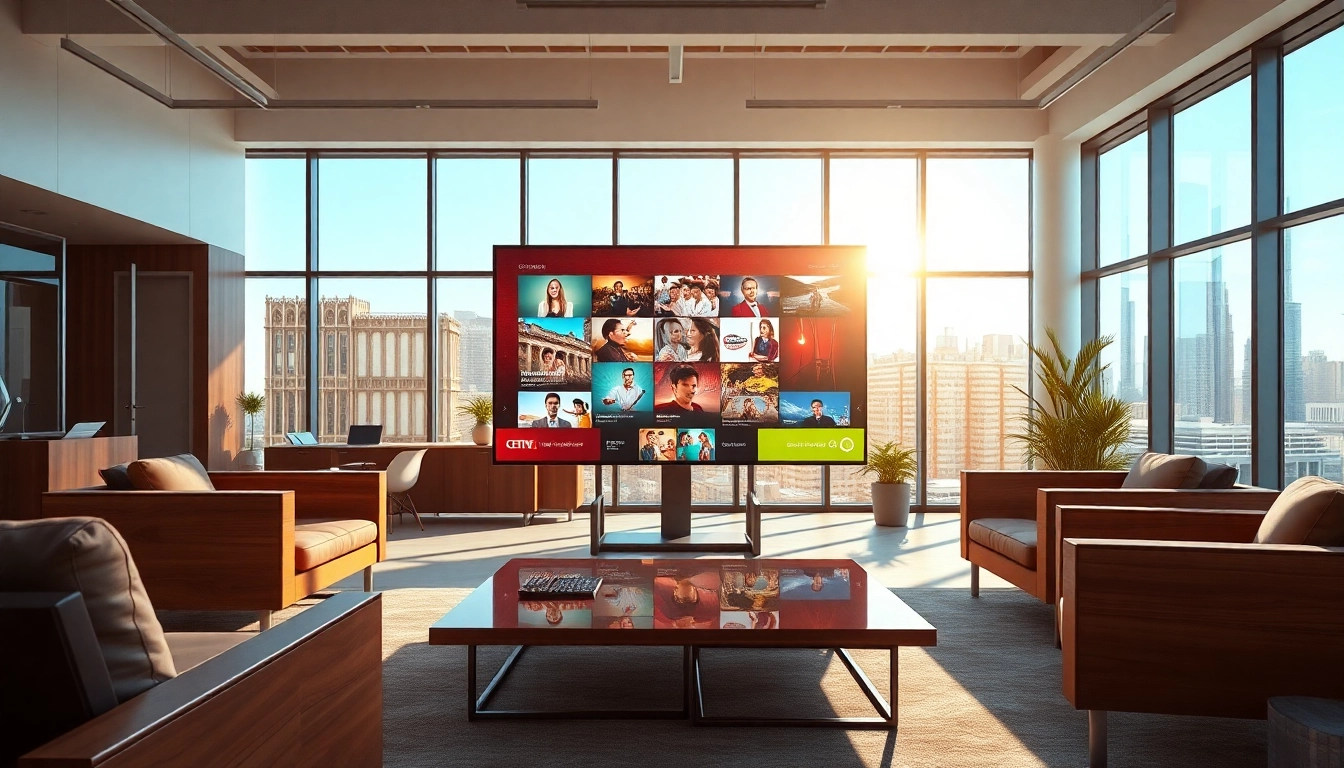In the evolving world of business communication, digital displays have become essential tools for engaging customers, informing employees, and reinforcing brand identity. As organizations grow and expand their visual networks, the need for Multi-screen digital signage management becomes increasingly important. This technology allows companies to control and coordinate content across multiple displays from a single platform, ensuring consistency, efficiency, and maximum impact. The future of this field promises even greater innovation, transforming how businesses use screens to communicate.
Why Multi-Screen Digital Signage Management is Becoming Essential
Modern businesses rarely rely on a single screen to convey their messages. Retail stores have display walls, restaurants have menu boards, corporate offices have lobby screens, and event venues feature large-format video walls. Without multi-screen digital signage management, controlling all these displays can be a logistical challenge.
The ability to manage multiple screens simultaneously ensures that messages remain synchronized, up-to-date, and relevant. Whether you’re running a nationwide promotional campaign or updating safety messages across an industrial site, multi-screen digital signage management provides a streamlined approach that saves time and minimizes errors.
Centralized Control for Consistent Branding
One of the main advantages of multi-screen digital signage management is centralized control. By using a single dashboard, marketing teams and content managers can deploy updates to all screens at once, maintaining brand consistency across locations. This ensures that logos, color schemes, and tone of messaging remain uniform no matter where the display is located.
Consistency builds trust and recognition among customers. If a franchise chain uses multi-screen digital signage management, customers can expect the same high-quality visuals and brand messages whether they visit a store in one city or another.
Real-Time Updates and Scheduling Flexibility
In today’s fast-paced business environment, messages often need to change quickly. With multi-screen digital signage management, businesses can update all connected displays instantly. This is particularly valuable for industries like retail, hospitality, and transportation, where promotions, schedules, or alerts must be delivered in real time.
Scheduling flexibility is another key advantage. Businesses can pre-plan content changes for specific times of the day, days of the week, or seasonal events. This ensures that each display shows the most relevant and timely information, improving audience engagement.
Enhanced Customer Experience Through Coordinated Displays
Coordinating multiple screens is not just about efficiency; it’s also about creating an immersive experience. With multi-screen digital signage management, businesses can synchronize content to run across several displays at once, producing impactful visual effects. For example, a retail store might use multiple screens to showcase a panoramic video of a new product line, while a sports bar might synchronize game highlights across every TV in the venue.
This level of coordination enhances the customer experience, making the environment more engaging and memorable.
Data-Driven Insights and Performance Tracking
The future of multi-screen digital signage management is increasingly tied to analytics. Many platforms now offer data tracking features that monitor how long viewers engage with content, which messages generate the most interest, and how content performance varies across locations.
By analyzing this data, businesses can refine their strategies to deliver more effective messages. If a certain promotion performs exceptionally well in one region, it can be replicated across all screens. Conversely, underperforming content can be adjusted or replaced to improve results.
Integration with Other Business Systems
As digital signage becomes more advanced, multi-screen digital signage management systems are integrating with other business tools. For example, they can connect to inventory databases, point-of-sale systems, or customer relationship management (CRM) platforms. This allows for highly targeted content, such as promoting products that are currently in stock or highlighting services that match customer purchase history.
Integration with social media feeds and live data sources is also becoming common, enabling displays to show trending topics, customer reviews, or live updates without manual input.
Scalability for Businesses of All Sizes
One of the greatest strengths of multi-screen digital signage management is scalability. A small business might start with just two or three displays, while a global corporation could operate thousands of screens worldwide. The same platform can handle both scenarios, allowing businesses to grow their digital signage networks without switching systems.
This scalability makes the technology suitable for a wide range of industries, including retail, healthcare, education, hospitality, transportation, and corporate communications.
Security and Reliability in Multi-Screen Management
With more screens connected to networks, security becomes a crucial consideration. Future multi-screen digital signage management solutions are focusing heavily on secure data transmission, user authentication, and system redundancy. These features protect businesses from unauthorized access and ensure that displays remain operational even in the event of network disruptions.
Reliability is equally important. Downtime on a single screen is inconvenient, but downtime across multiple screens can disrupt operations and damage brand perception. Advanced systems are designed to minimize outages through failover servers and local caching.
The Role of AI and Automation
Artificial intelligence is set to play a major role in the next generation of multi-screen digital signage management. AI can analyze audience demographics, traffic patterns, and engagement data to automatically adjust content for maximum impact. It can also recommend optimal scheduling, select the most relevant media, and even generate new content based on predefined brand guidelines.
Automation will further reduce the need for manual oversight, freeing up time for marketing teams to focus on creative strategy rather than operational tasks.
Preparing for the Next Era of Digital Signage
The future of multi-screen digital signage management is all about personalization, interactivity, and seamless integration. As displays become more interactive, customers will be able to engage directly with content, from browsing product catalogs to participating in live polls. Integration with augmented and virtual reality will open new possibilities for immersive brand experiences.
Businesses that invest in advanced multi-screen digital signage management now will be better positioned to take advantage of these innovations as they emerge. The technology not only improves operational efficiency but also elevates customer engagement, making it a vital component of modern business communication.





